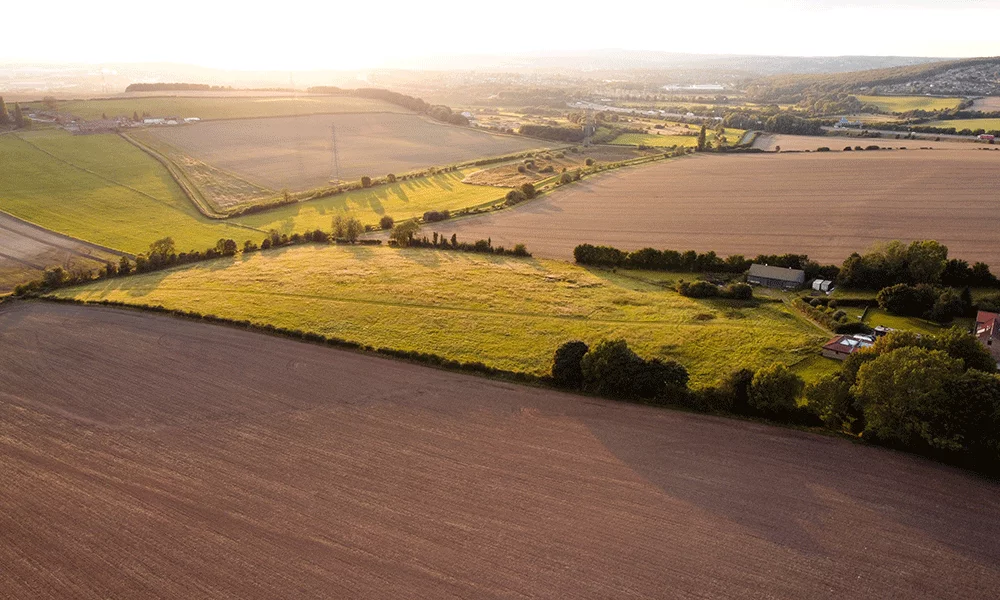What Does The Future of Farming in the UK Look Like?

On January 1 2021, the Government’s Agriculture Bill took over from the Common Agricultural Policy; spelling a new era for farming in the UK.
The Brexit transition period ended, and the UK officially left the European Union, signalling the beginning of one of the most significant shifts in agricultural policy in recent living memory. The Agriculture Bill prioritises greener and more productive farming, encompassing:
- • Cutting carbon emissions
- • Creating more space for wildlife
- • Making improvements to animal welfare
While also promising to be an “evolution, not a revolution,” of the industry.
The Agriculture Bill got us thinking about the long-term future of farming. What will it look like in the UK? Will it be vertical, floating, or indoors? Will it be autonomous? With this in mind, we have put together three possible directions the future of farming in the UK could take:
So, is the future of farming indoors?
In 2016, the indoor farming technology market was valued at $23.75bn, and is expected to be worth $40.25bn next year. Currently, the yields produced by many indoor farms are either on par (or higher) than traditional farming methods; crops can be grown all year round, regardless of the weather outside.
Indoor agriculture could also be the key to farming in a warming climate. For many indoor farms, crop production revolves around a living biosystem, constantly monitored and tweaked to maintain optimal conditions for the best yields.
Plus, when compared to traditional farming methods, indoor farming is (unfortunately) less intensive on the environment. Using less water and producing fewer emissions, crops grow under coloured LED lights and with no pesticides and less fertiliser than needed on a traditional farm.
Embracing ‘Nature-Friendly’ Farming in the UK
The National Trust is the UK’s largest private landowner and farmer, with most of its land farmed by either its own farmers, or 1,350 agricultural tenants. The Trust is a huge advocate for the Government’s Agriculture Act’s potential, with ambitious plans to make at least half of its private farmland nature-friendly by 2025.
What is ‘nature-friendly farming? Basically, it is a way of farming that is both sustainable and good for nature. Thanks to the Agriculture Act and the Environmental Land Management scheme (via the individual Sustainable Farming Incentive, Local Nature Recovery and Landscape Recovery schemes), the Government has a unique opportunity to champion positive and greener changes in a post-Brexit environment. If executed properly, farming in the UK could become world-leading – prioritising greener investments while also securing high-quality food production.
Utilising Innovation to Create Vibrant Agriculture
According to Bayer, the future of farming in the UK is largely dependent on a collaborative spirit across every step of the food chain. Championing greater biodiversity in the countryside could be the key to farming in the UK in both the short and long-term future.
Now that the UK has left the European Union, the Government has the opportunity to move agriculture closer to the global model; implementing a risk-based regulatory system – where innovation and evidence trumps precaution and the customer ultimately decides whether the farming methods are acceptable (not lobbyists or politicians).
However, by adopting a different farming model, and balancing productive food production with targeted biodiversity outcomes, the public’s perception of farming needs to change. Without a belief in farmers, the innovation and imagination required to adopt this model will never get off the ground.
Farming in the UK is changing
There’s no way to guarantee what the future of farming in the UK could look like. It could be vertical, indoor, floating or even fully automated. Despite this, it’s clear that agriculture in the UK needs to evolve and adapt to keep up with the global standard, while also becoming greener.
Transformational innovation will be critical for many farms, but how can we make sure that the country’s farming heritage can be maintained to make sure they can work alongside the future’s farming methods? Guaranteeing the place of traditional farms in the future will be the real challenge.





